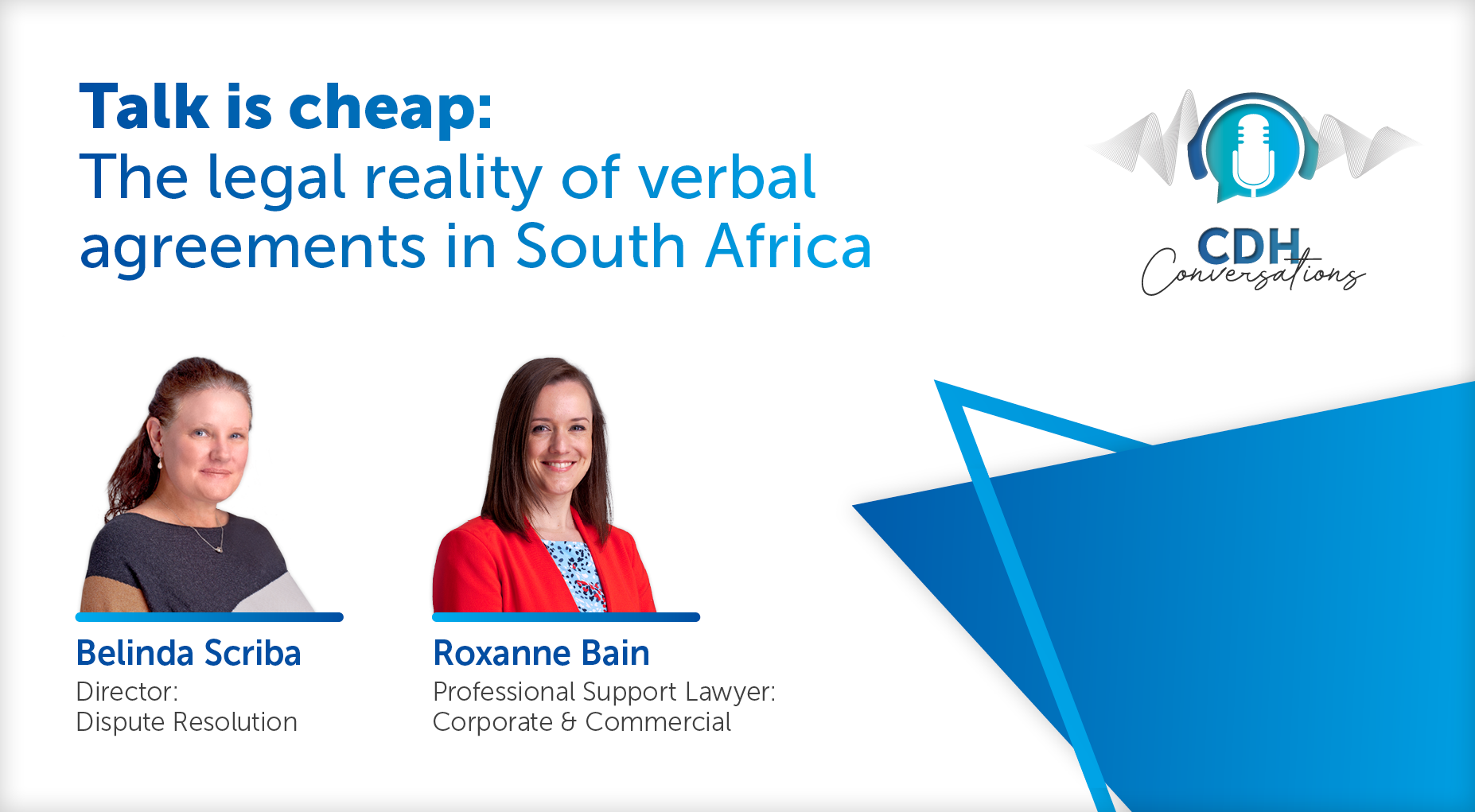Leftover liability: surety’s obligations after successful business rescue proceedings in terms of section 154(2) of the Companies Act
At a glance
- The case of Martin van Zyl v Auto Commodities dealt with the effect of successful business rescue on the liability of sureties.
- Section 154(2) of the Companies Act states that creditors cannot enforce debts owed by a company undergoing business rescue, except as provided for in the business rescue plan.
- The court interpreted section 154(2) as limiting the creditor's enforceability of the debt but not extinguishing it entirely, clarifying that sureties may still be held liable depending on the terms of the deed of suretyship.
Section 154(2) states that;
“if a business rescue plan has been approved and implemented in accordance with this Chapter, a creditor is not entitled to enforce any debt owed by the company immediately before the beginning of the business rescue process, except to the extent provided for in the business rescue plan” (own emphasis added).
Factual Background
The Appellant, Mr van Zyl, was the former Chief Executive Officer of Blue Chip Mining and Drilling (Pty) Ltd (BCM), a company to which the Respondent, Auto Commodities (Pty) Ltd, provided petroleum products to on credit. Mr van Zyl bound himself as surety with BCM for the products acquired on credit from the Respondent. BCM was placed under business rescue in December 2014, the business rescue plan being successfully adopted in June 2015. The Respondent received two dividend pay outs amounting to R1,9 million in December 2015 and 2016 from BCM. BCM’s business rescue terminated in January 2017 since the business rescue plan had been substantially implemented. In July 2017, the Respondent issued summons against Mr van Zyl for the shortfall of BCM’s indebtedness to the Respondent, being in excess of R6 million.
In the court a quo, the Respondent was successful in its claim against Mr van Zyl, the claim being based on an argument that the wording of the deed of suretyship allowed it to claim payment from Mr van Zyl for the balance of the indebtedness that was owed by BCM. Clause 3 of the Deed of Suretyship specifically provided that leniency, extension of time or any other such arrangement between the Respondent and BCM would not constitute a waiver of the Respondent’s claim in terms of the suretyship. Furthermore, clause 5.4 provided that no event of compromise between the Respondent and BCM, particularly the payment of dividends, would prejudice the Respondent’s right to recover “to the full extent of this Suretyship, any sum which, after the receipt of such dividends or payments, will remain owing” from the surety.
Mr van Zyl appealed to the Supreme Court of Appeal and argued that when the business rescue terminated, section 152(4) of the Companies Act released BCM from any further indebtedness to the Respondent, which in turn released Mr Van Zyl as surety from liability. The rationale of the argument was that suretyship is an accessory obligation, and release from the principal debt is release from the accessory debt. On the other hand, the Respondent argued that the deed of suretyship was wide enough to maintain Mr van Zyl’s liability, regardless of the effect of section 154(2) of the Act.
Although the business rescue plan made provisions to release BCM from the balance of some, and not all, of its debts; the wording of the deed of suretyship was sufficient to discharge Mr van Zyl’s case, and the appeal was ultimately dismissed.
This judgment has brought about certainty in the interpretation of section 154(1) and (2) of the Act.
Interpretation of sections 154(1) and 154(2) of the act
The court found that the heading of section 154, being “The discharge of debts and claims” suggested an inherent distinction between the effect of section 154(1), being the discharge of debts, and section 154(2), being a limitation on the enforcement of debts.
Section 154(1) states that “a business rescue plan may provide that, if it is implemented in accordance with its terms and conditions, a creditor who has acceded to the discharge of the whole or part of a debt owing to that creditor will lose the right to enforce the relevant debt or part of it”. Although the court was not required to state with certainty the meaning of section 154(1), it was accepted that the aim of section 154(1) is to extinguish the creditor’s right to enforce its debt, which would in turn extinguishes the creditor’s right to enforce against the surety.
Regarding section 154(2) the court found that the wording of the section merely limits the creditor’s enforceability of its right, specifically against the debtor, but does not extinguish the debt in its entirely. The court further confirmed the constitutionality of this interpretation, particularly on whether the interpretation could be considered a deprivation of property in terms of section 25(1) of the Constitution. The court found that the ordinary creditor would not read section 154(2) to mean that their deed of suretyship is rendered worthless in the event of an adoption and implementation of a business rescue plan. Thus, the interpretation that section 154(2) merely limits the creditor’s claim but does not deprive them of their right which may still be enforceable against sureties.
Conclusion
It is standard commercial practice that a deed of suretyship would contain clauses such as clause 3 and 5.4 in the deed of suretyship in this case. Therefore, any person who binds themselves as surety should be alive to the possibility that although the principal debtor might be released from its obligations following a business rescue plan, it does not necessarily mean that the surety is also released from its obligations. As such the surety can still be held liable for the principal debt. This is what we call leftover liability. Although section 154(2) may limit a creditor’s claim against the principal debtor after the business rescue plan has been implemented, this is not the equivalent of extinguishing the debt and as such a surety’s liability, depending on the wording of the deed of suretyship, still remains. We encourage clients to be mindful of leftover liability that may apply to sureties after the successful implementation of a business rescue plan, and to seek legal advice when faced with such an issue.
The information and material published on this website is provided for general purposes only and does not constitute legal advice. We make every effort to ensure that the content is updated regularly and to offer the most current and accurate information. Please consult one of our lawyers on any specific legal problem or matter. We accept no responsibility for any loss or damage, whether direct or consequential, which may arise from reliance on the information contained in these pages. Please refer to our full terms and conditions. Copyright © 2025 Cliffe Dekker Hofmeyr. All rights reserved. For permission to reproduce an article or publication, please contact us cliffedekkerhofmeyr@cdhlegal.com.
Subscribe
We support our clients’ strategic and operational needs by offering innovative, integrated and high quality thought leadership. To stay up to date on the latest legal developments that may potentially impact your business, subscribe to our alerts, seminar and webinar invitations.
Subscribe




